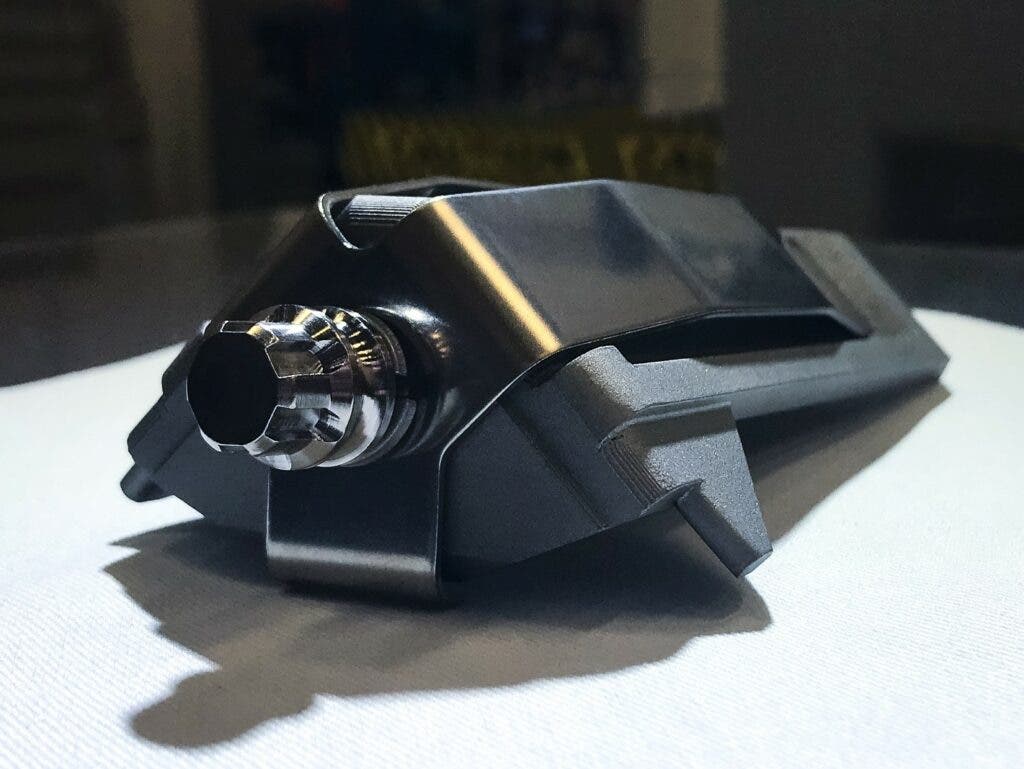At the US Department of Energy’s (DOE) Manufacturing Demonstration Facility at Oak Ridge National Laboratory (ORNL), two unusual components were assembled — and by assembled, I mean 3D-printed. The two channel fasteners are now in use at the Tennessee Valley Authority’s Browns Ferry Nuclear Plant Unit 2 in Athens, Alabama.

Not too long ago, 3D-printing was an innovative but still new technology that promised to change the world — at some point in the future. Well, that point in the future has come. Not only is the technology mature enough to be used, but it’s mature enough to be used in a crucial system where failure is simply not acceptable.
“Deploying 3D-printed components in a reactor application is a great milestone,” said ORNL’s Ben Betzler in a recent press release. “It shows that it is possible to deliver qualified components in a highly regulated environment. This program bridges basic and applied science and technology to deliver tangible solutions that show how advanced manufacturing can transform reactor technology and components.”
“ORNL offers everything under one roof: state-of-the-art printing capabilities, world-class expertise in machining, next-generation digital manufacturing technologies, plus comprehensive characterization and testing equipment,” said Ryan Dehoff, ORNL section head for Secure and Digital Manufacturing.
The components are a good fit for the task. The channel fasteners have a relatively simple geometry, which works excellently with an additive manufacturing application (which is what “3D printing” commonly refers to). Fuel channel fasteners have been used for many years in boiling water nuclear reactors. They attach the external fuel channel to the fuel assembly, ensuring that the coolant is restrained around each fuel assembly.
[Also Read: The first ever 3D-printed steel bridge opens in Amsterdam]
Growing up
3D printing has matured dramatically in recent years, and the fact that the nuclear industry is increasingly looking towards it speaks volumes about that.
The components were developed in collaboration with the Tennessee Valley Authority, French nuclear reactor Framatome, and the DOE Office of Nuclear Energy. This was funded by the Transformational Challenge Reactor, or TCR, program based at ORNL.
Currently, the TCR aims to further mature and implement innovative technologies (and algorithms such as artificial intelligence) to its components and projects.
“Collaborating with TVA and ORNL allows us to deploy innovative technologies and explore emerging 3D printing markets that will benefit the nuclear energy industry,” said John Strumpell, manager of North America Fuel R&D at Framatome. “This project provides the foundation for designing and manufacturing a variety of 3D-printed parts that will contribute to creating a clean energy future.”
The change has been made for a couple of months now, and operations at the Browns Ferry plant resumed on April 22, 2021. The components appear to operate as intended, and they will remain in the reactor for six years with regular inspections during this period.
This is just one example of the projects that involve 3D printing for nuclear reactors. ORNL are looking at ways to extend the viability and operations of nuclear plants, while also deploying new components that would make plants more efficient and robust.
3D printing is reshaping what’s possible with nuclear energy, and could very well have an important part to play in our transition towards a sustainable, low-carbon future. At the very least, it’s bound to make nuclear energy cheaper and more competitive with fossil fuels.
“There is a tremendous opportunity for savings,” said John Strumpell, manager of U.S. fuel research and development at Framatome, in a previous press release earlier this year. Indeed, 3D printing seems ready to enter the market.






